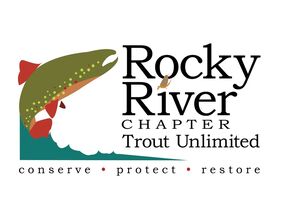Fly of the Month - Perdigon Nymph
For decades, epoxy has been a go-to material for creating a highly durable fly pattern. The epoxy allows all of the colors of the materials to show vividly, yet the harden shell of epoxy can take a beating from the larger , toothy trout. However, epoxy is a true pain to use in a fly pattern as it requires mixing tow reactive liquids and applying the material under a strict hardening timeframe. Taking too long the epoxy becomes useless and the tyer must make another batch. Make too much the excess is wasted.
The modern equivalent is the super flexible UV resin. Apply the material from a tube in the same manner as glue, then once the coating on the fly pattern is complete, simply shine your UV light source on the fly pattern and you have a clear, hard, durable surface coating like the one you get from epoxy without the mixing, the rush or the waste. UV resin is considered one of our modern miracles in the evolution of fly tying.
Butano Nymph
Pliva Perdigon
With this in mind, let's focus on an example use of UV resin - creating small, simple, durable nymphs. Named after a French troubadour, these nymphs originated in Spain which were first utilized in the Pyrenees Mountain streams between Spain and France. They are small, well weighted, highly durable nymphs for Spanish nymphing for trout and grayling - much like Czech nymphing - designed for European fly fishing tournament use.
These patterns are typically tied in sizes 12 to 16, easy to tie and sink quickly. A jig hook is preferred to allow the fly pattern to touch bottom with the hook up for less snagging. An oversized bead is used for faster sinking and the tail is typically Spanish Coq de Leon (CDL) or similar fibers. Flash and hot spots are used along with a dot of black nail polish for the wingcase.
Here are some, but certainly not all, of the Perdigon nymph fly patterns we are aware of : Rainbow, McPhail's, Quill, Pearl, Mosaic, Bibio, Orange Spot, Pink and Mauve, Bluespot, Pink Lady, Butano, Pliva
These nymphs are considered by fly fishing tournament followers to the be the hot ticket and since they are easy to tie, Jack McNeary often teaches these as part of the annual Rocky River Trout Unlimited Beginners Fly Tying Class.
Tom Adams and Alen Baker
References:
Internet; Jack McNeary RRTU Beginner’s Fly Tying Class
Pliva Perdigon
Hook : TMC 100 or equivalent size 10,12,14,16,18,20
Thread : Veevus 16/0 Fl Orange
Body : Veevus Light Olive body quill
Rib : UV crystal flash in chartruese
Bead : Copper, Gold, or Silver Tungsten to match hook size, with lead free wire
Wingcase : Black nail polish or black UV resin
Tail : CDL
Directions :
Hook : TMC 100 or equivalent size 10,12,14,16,18,20
Thread : Veevus 16/0 Fl Orange
Body : Veevus Light Olive body quill
Rib : UV crystal flash in chartruese
Bead : Copper, Gold, or Silver Tungsten to match hook size, with lead free wire
Wingcase : Black nail polish or black UV resin
Tail : CDL
Directions :
- After loading the bead. Mount the hook in the vise. Make three or four turns of lead free wire and push into the bead.
- Use the Veevus body quill as the tying thread. This material will break or stretch easily, so use as light a touch as possible. Begin wraps at the bead and advance toward the bend, stopping short.
- Select three or four CDL fibers and measure to the length of the hook shank. Tie in using the body quill and trim any excess CDL.
- Tie in a three or four inch length of crystal flash at the tail.
- Form a small taper of body quill. Secure with half hitches and trim away the body quill.
- Tie in the Veevus Fl Orange thread at the bead and let the bobbin hang
- Advance the crystal flash in open turns to the bead and secure with the Fl Orange thread. Trim the waste crystal flash. Make several turns of Fl Orange thread to form the hot spot at the bead. Secure with half hitches and trim the waste.
- Use thin UV resin to coat the full body, from bead to the tie in of the tail. Set the resin with the torch.
- Use the black nail polish to make a small wingcase from the bead to about one third of the thorax. Let the nail polish dry completely and coat the full body with thin UV resin one more time. Set the resin with the torch to finish.
